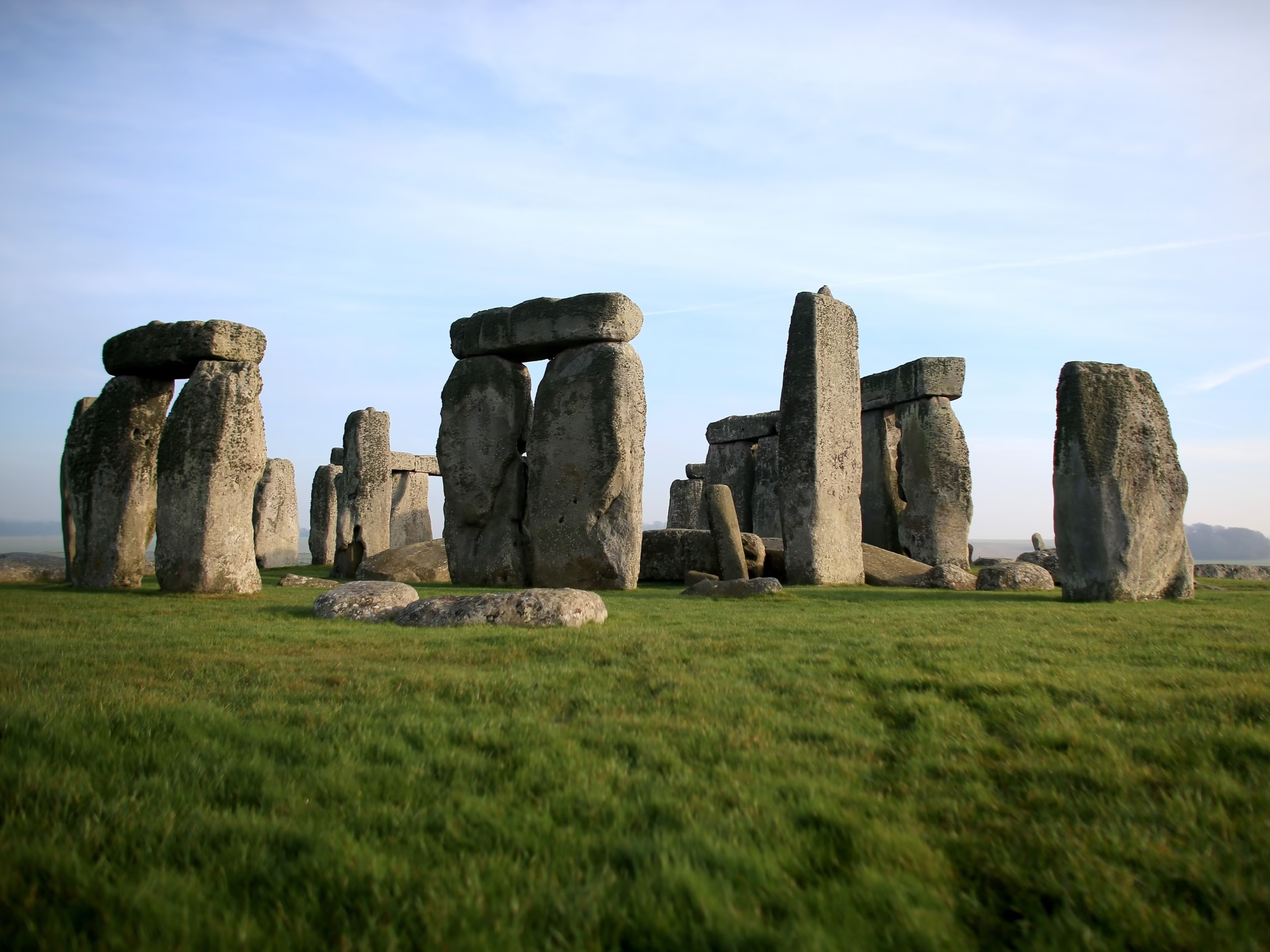
The Mystery of Stonehenge: What We Know and What We Don’t
Stonehenge, an iconic prehistoric monument in Wiltshire, England, stands as a testament to the ingenuity and ambition of our ancestors. Its enigmatic nature has captivated humanity for centuries, inspiring countless theories, legends, and artistic interpretations. This article delves deep into the world of Stonehenge, exploring what we currently understand and acknowledging the vast mysteries that remain. We will journey through its construction, purpose, cultural significance, and the ongoing research that continues to illuminate its secrets.
I. The Monument Itself: A Colossus of Stone and Mystery
Stonehenge’s imposing presence is immediately striking. The monument consists of a complex arrangement of massive stones, meticulously placed in a circular pattern. The sheer scale of the undertaking is astonishing, considering the technological limitations of the Neolithic and Bronze Age. The largest stones, known as sarsen stones, are enormous blocks of sandstone, some weighing up to 50 tons. These colossal monoliths were transported from quarries in Marlborough Downs, approximately 25 miles away, a feat of engineering that continues to baffle archaeologists.
The smaller stones, known as bluestones, present an even greater puzzle. Geological analysis suggests that they originated from the Preseli Hills in Wales, over 150 miles away. The transportation of these stones, across challenging terrain and distances, remains a subject of intense debate. Various theories propose the use of sledges, rollers, rafts, and possibly even a combination of methods, highlighting the immense human effort required. The precise routes taken and the logistics involved are still under investigation, with ongoing research using geophysical surveys and other advanced techniques attempting to reveal the ancient pathways. The sheer scale of the undertaking suggests a highly organized society, capable of coordinating massive manpower and resources over extended periods.
The arrangement of the stones themselves is not random. The sarsen stones form a horseshoe-shaped structure within a larger circular enclosure. The bluestones, many smaller and more slender, are found within the horseshoe and in a separate, smaller circle. The precision of the placement hints at a deeper understanding of astronomy and geometry than previously assumed. The meticulous alignment of certain stones with the solstices and equinoxes suggests the monument’s potential function as an astronomical observatory. The significance of the precise angles and alignments continues to be studied, with researchers using sophisticated computer modeling to analyze the astronomical correlations. The intricacies of these alignments are still being debated and deciphered.
The stones themselves are far from uniform. Some show signs of significant weathering, while others are remarkably well-preserved. Many are marked with carvings, though their meanings remain largely elusive. Some suggest simple tools marks from the shaping process, while others seem more deliberate, possibly symbolic or ritualistic. Detailed photographic analysis, combined with advanced imaging techniques, is slowly revealing more about these carvings and their potential meanings.
II. The Construction of Stonehenge: A Testament to Human Ingenuity
The construction of Stonehenge unfolded over several centuries, spanning different phases and involving diverse construction techniques. The earliest phase, dating back to around 3000 BC, involved the creation of a large circular ditch and bank, enclosing a vast area. Within this enclosure, a series of 56 pits, known as the Aubrey Holes, were dug. The purpose of these holes, which initially contained wooden posts, remains unclear. Some researchers suggest they may have formed a precursor to the later stone arrangement.
The later phases involved the transportation and erection of the sarsen and bluestones. The precise methods used are a subject of ongoing debate. However, several theories have emerged, including the use of wooden rollers, levers, ramps, and possibly even a form of primitive scaffolding. The massive weight of the stones required a sophisticated understanding of leverage and mechanics. Recent experimental archaeology projects have attempted to recreate some of the construction techniques, providing valuable insights into the logistical challenges and the ingenuity of the builders.
The alignment of the stones, with their precise orientations and spacing, requires a level of mathematical and astronomical understanding that is astonishing for that period. This points towards a degree of planning and organizational capacity far beyond what many previously assumed for Neolithic societies. It also suggests a degree of specialized knowledge, with individuals possessing expertise in astronomy, engineering, and construction management.
The final phase of construction saw the addition of the trilithons, massive stone structures consisting of two upright sarsen stones topped with a lintel. The sheer weight and size of these structures, as well as their precise placement, further underline the technological prowess and coordinated effort involved. The creation of these trilithons alone represents a staggering engineering accomplishment.
III. The Purpose of Stonehenge: Enduring Mysteries and Competing Theories
The purpose of Stonehenge remains a central mystery, sparking countless debates and theories. The lack of written records from the period leaves us to rely on archaeological evidence, astronomical alignments, and comparative studies of other similar monuments. Several leading theories attempt to explain the monument’s function:
Astronomical Observatory: The alignment of some stones with the solstices and equinoxes strongly supports the theory that Stonehenge served as an astronomical observatory. The monument’s layout accurately tracks the movements of the sun and moon, allowing for precise predictions of celestial events. This would have been crucial for agricultural practices and potentially for religious or ceremonial purposes.
Burial Ground: Numerous human remains have been discovered around Stonehenge, suggesting a possible connection to burial practices. However, whether the site primarily served as a burial ground or whether burials were a secondary function remains unclear. The types of burials discovered, their arrangement, and the artifacts associated with them are all carefully analyzed for clues.
Healing Center: Some scholars propose that Stonehenge served as a center for healing rituals. The presence of certain types of stones and their possible therapeutic properties are linked to this theory. However, concrete evidence linking the stones to healing practices is still lacking.
Ceremonial and Ritual Center: The most widely accepted theory is that Stonehenge was primarily a ceremonial or ritual center. The layout, the alignments, and the artifacts found support this theory. The significance of the monument as a focal point for gatherings, rituals, and potentially religious practices is generally considered most plausible. However, the exact nature of the ceremonies and rituals remains open to interpretation.
Marketplace or Gathering Place: Some less popular theories suggest Stonehenge may have been a central marketplace or a gathering place for larger regional communities. This theory is supported by evidence of trade routes and the presence of artifacts from various regions. However, this hypothesis does not fully account for the precise astronomical alignments and the unique structure of the monument.
The lack of definitive answers fuels the enduring mystery and allows for a continuing search for understanding. Researchers continue to analyze various aspects of the site, applying new technologies and perspectives to unlock its secrets.
IV. Ongoing Research and Technological Advancements
Modern research employs a wide range of techniques to unveil Stonehenge’s secrets. Ground-penetrating radar, magnetometry, and other non-invasive methods are used to map the subsurface features of the site. These techniques have revealed previously unknown structures and features, including hidden burial mounds and other possibly ritualistic arrangements within the surrounding landscape.
3D scanning and photogrammetry create highly detailed digital models of the stones, allowing for detailed analysis of their shapes, carvings, and weathering patterns. These digital models provide a powerful tool for research, allowing virtual reconstruction and analysis without the need to handle the delicate original artifacts.
Genetic analysis of human remains discovered at Stonehenge and nearby settlements has offered insights into the origins and migrations of the builders. This helps to understand the possible connections between the people who created Stonehenge and other groups in Britain and beyond.
The ongoing study of the astronomical alignments using sophisticated computer modeling has provided increasingly accurate correlations between the monument’s structure and celestial events. This supports the notion of Stonehenge as a sophisticated astronomical observatory, potentially used for agricultural planning or religious purposes.
V. Stonehenge’s Legacy: Cultural Significance and Preservation
Stonehenge’s cultural significance extends far beyond its archaeological importance. It is a globally recognized symbol of British heritage and inspires awe and wonder worldwide. The monument has become a source of artistic inspiration, appearing in countless books, films, and artistic renderings.
The protection and preservation of Stonehenge are paramount. The Stonehenge Trust actively works to conserve the site, manage visitor access, and conduct ongoing research. UNESCO World Heritage status provides additional layers of protection and international recognition. However, challenges remain. Balancing public access with the need to protect the site from environmental damage and erosion is an ongoing concern.
Stonehenge’s enduring appeal lies not only in its physical grandeur but also in the mysteries it still holds. The ongoing research and the application of new technologies continue to unveil new insights into its construction, purpose, and the lives of the people who built and used it. This ongoing quest for knowledge ensures that Stonehenge will remain a source of fascination and inspiration for generations to come. Its enduring power lies in its capacity to connect us to the past, reminding us of the ingenuity, ambition, and enduring legacy of our ancestors. The mystery of Stonehenge, far from diminishing, is enriched by the ongoing process of discovery. It continues to challenge our understanding of the past, demonstrating the capacity for human achievement and leaving us to contemplate the enduring power of human imagination and ingenuity. The pursuit of understanding Stonehenge is itself a testament to our curiosity and our desire to connect with the past.


